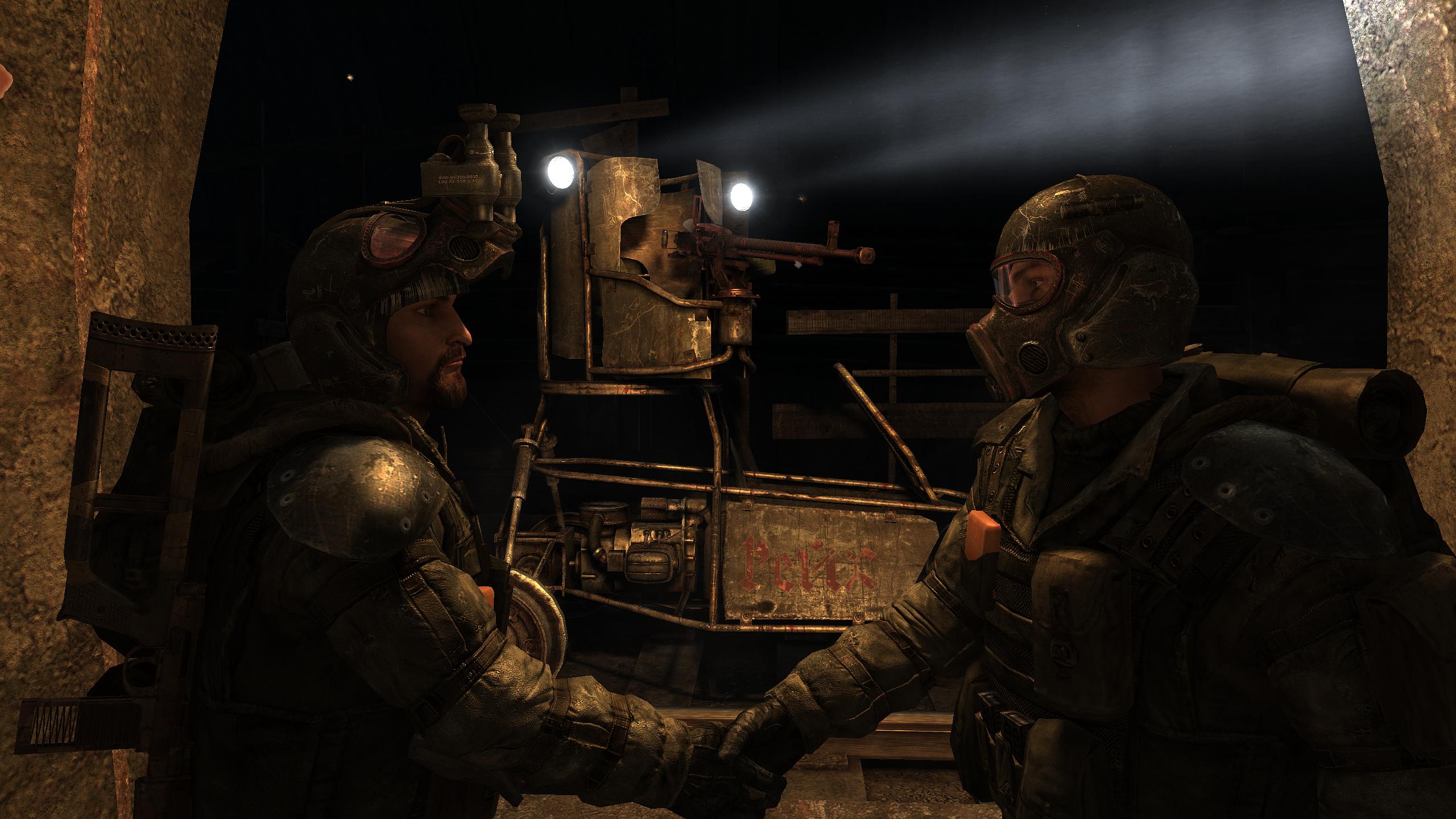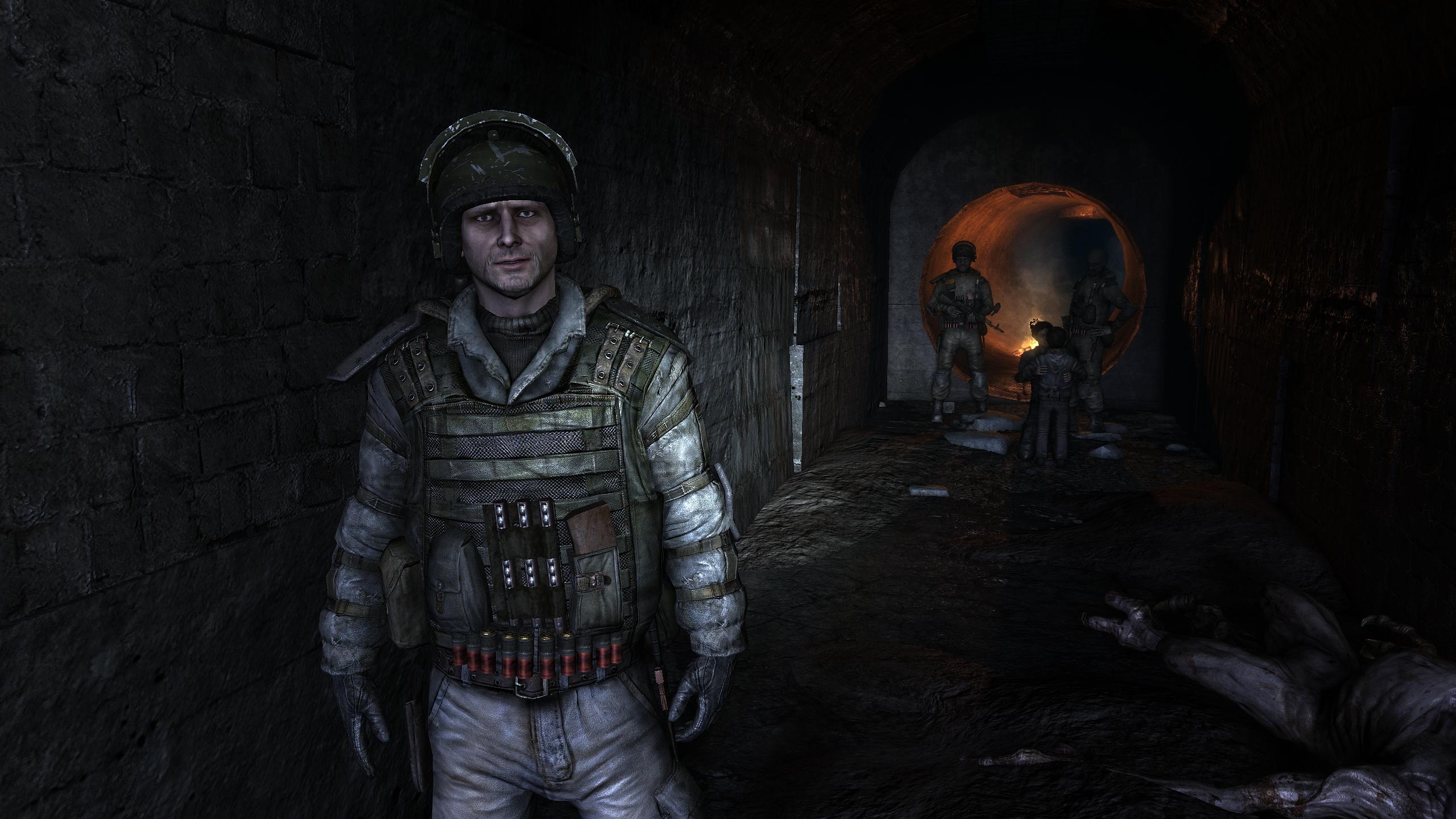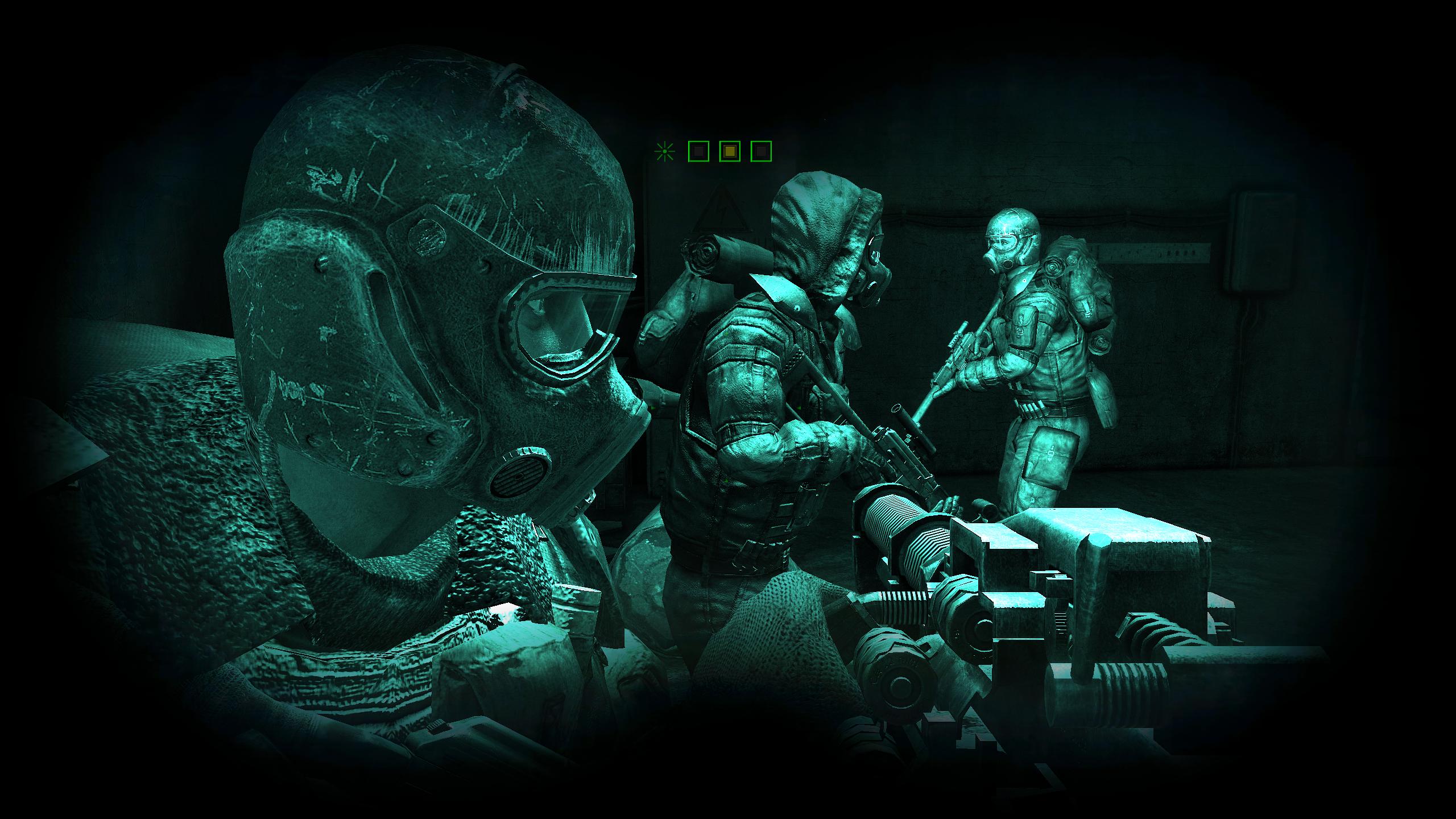
At the heart of it, Metro 2033 is about camaraderie. You’re not a Ranger, but friends help out friends.
I think I restarted the original Metro game probably five or six times. It wasn’t because I wasn’t very good at it, or that I didn’t enjoy it, but every time I’d get up to one part, but then I’d run out of filters and die in the harsh environment of the post-war Moscow. Or I’d come up against innumerable enemies, waste all my ammunition, and die. Or maybe I’d lose my way, frantically run around trying to find the next area to go to, run out of filters, and die unceremoniously in some dark corner, panting for breath as everything slowly faded to black.
I probably played through the first few chapters five, maybe six times, each time growing more and more frustrated with a game everyone was raving about, all because of its incredibly atmospheric gameplay and fantastic plot — an atmosphere and plot I was being denied time and time again, due to my own inability to survive on the irradiated surface.
It even got to the stage where I wanted to play through the game so badly, wanted to experience it for myself, that I looked up cheats for “infinite ammo”, or some kind of god-mode invincibility so I wouldn’t have to worry about using my hard-earned military-grade rounds buying filters for my mask whenever I got the chance. I’m usually against cheats, but in this case I was making an exception. I was desperate to play the game, but it seemed as if the game didn’t want to be played. At least, not by me.
So I played other games. Every time Metro 2033 came up in a Steam sale, I pushed away the guilt of never having played what was by all accounts a fantastic game, ashamed I couldn’t even beat it on the easiest difficulty. My pile of shame grew, but Metro 2033 sat squarely on the top of the pile.
It wasn’t until Metro: Last Light came out that I read a review of Last Light that said the first game was supposed to be played as a stealth shooter. Then it dawned on me almost as if I had just stepped out of the underground tunnels of the metro and into the harsh sunlight above ground: that was exactly what I had been doing wrong all along. Instead of sneaking around in the shadows, crouch-running through the tunnels, I had been going in all-guns blazing. Instead of conserving my ammo, I had been neglecting my knife when only one or two enemies were between me and my goal.

Looking back at it now, I’m reasonably surprised I didn’t think of playing 2033 as a stealth game. I must have restarted the game some five or six times without changing my play style, each time expecting to Rambo through sections with wanton abandon and then dying out in the unforgiving tunnels and surface. But after learning about playing it as a stealth game, everything changed. Suddenly, I had more filters than I knew what to do with. My knife became my best friend for dealing with one or two bad guys, and ammo, while not exactly abundant, became plentiful enough.
The game changed.
Instead of a game where my every thought was on survival and finding enough filters, it became a game about exploration and discovery. Fear was replaced by a curiosity that could only be sated by exploring every nook and cranny for supplies, with little fear about how many filters I had or which direction I was going — although that could also be attributed to my compass, which always lead the way to the next objective, to the next rendezvous.
Sections that had seemed impassable before due to the numbers of enemies between myself and my object now seemed easier, somehow, either by use of stealth or a little ingenuity on my part. The game didn’t become any easier, necessarily, but the simple act of playing it differently meant that I could see and explore places I wouldn’t have had the chance to had I just sprinted through rooms filled with enemies.
I started to enjoy the game.
And what a game it was. The reviewers and critics were right: Metro 2033 was as deserving of every accolade it earned, and for good reason. As an introduction into the subterranean life of a post-nuclear-war Russia, it was unparalleled. As a look into the life of one individual’s journey through the dark tunnels of the Metro, the harsh wasteland of the surface, and deep behind enemy lines, it was an awe-inspiring experience.
Forging your own path was easier if you shot out all the lights first so that you could remain unseen, as indicated by your handy watch. Stealthily taking down enemies wherever possible meant you raised the least amount of suspicion, meaning a longer time undisturbed looking for ammo, military-grade rounds, or secret caches filled to the brim with ammo, filters, and military-grade rounds.

“Does this helmet kind of remind you the NCR Ranger Combat Armour from Fallout 3, or is it just me?”
But as much as you thought you were the silent killer lurking in the shadows, you never felt overpowered compared to the enemies you encountered — human or otherwise. Part of the reason you had to sneak around in the first place is because you’d quickly run out of ammo if you had to engage the enemy, particularly during the section where you’re between two sets of enemies on either side, where you have to jump around and avoid being spotted. The only time you feel on top of things is when you’re journeying towards the D6 compound with your fellow Rangers — only because there’s safety in numbers, and even then, only when those numbers are comprised of the Ranger elite.
In terms of gameplay, Metro 2033 is a shining example of how to do stealth right. There’s parts where stealth benefits you greatly, combined with parts where you can’t stealth due to environmental conditions, and just have to run and gun. Your watch helps you immensely, and paying attention to it is usually the difference between a successful stealth attempt and tens of soldiers being alerted to your presence and opening fire.
The plot of Metro 2033 isn’t too bad either. You meet a couple people and do a few things along the way. You’re never completely alone except for a few short parts here and there, and you always have a clear sense of purpose, even when you’re given the freedom to roam around an underground establishment or and above-ground environment.
For the most part, other characters will be there to guide you through various sections. It’s a little hand-holdy at times, but means you’re never really thrown into a situation you can’t handle. I usually hate escort missions, but this isn’t like that at all — if anything, it’s more like a reverse escort mission where you’re the one being escorted through the bowels of post-nuclear-war Moscow, being taught survival tips and tricks along the way. If another character tells you to jump, you don’t even have to ask how high, because he’ll tell you.
The introduction at the start of the Metro 2033 is brilliantly executed — the whole “play through this first part, then flashback to the beginning of your journey, playing though until you come back to this section again” aspect is a plot device more frequently used in TV, but it still works here. It creates enough intrigue to get you hooked and just enough action to blow you away, at which point it dials it all back a few notches so you can start to ask questions and get truly into the plot and story that Metro 2033 presents during the course of gameplay.
Make no mistake: Metro 2033 is a great game.
Continue Reading →






![monkeydseehr: Weaponry - Mass Effect [◼] | hexington](https://www.bennylingbling.com/wp-content/uploads/2013/06/tumblr_moi9pfSWr11qftanso1_500.jpg)
![monkeydseehr: Weaponry - Mass Effect [◼] | hexington](https://www.bennylingbling.com/wp-content/uploads/2013/06/tumblr_moi9pfSWr11qftanso2_500.jpg)
![monkeydseehr: Weaponry - Mass Effect [◼] | hexington](https://www.bennylingbling.com/wp-content/uploads/2013/06/tumblr_moi9pfSWr11qftanso3_500.jpg)
 ] | hexington
] | hexington
